Marks & Spencer Business Environment: PESTEL, SWOT & Objectives
VerifiedAdded on 2023/04/03
|10
|796
|459
Report
AI Summary
This report provides an analysis of the business environment of Marks and Spencer PLC (M&S), focusing on the impact of both internal and external factors on its operations and decision-making. The report utilizes PESTEL analysis to assess the macro-environmental factors, including political, economic, social, technological, environmental, and legal aspects, with specific attention to government policies related to food products and environmental protection. It also includes a SWOT analysis to identify the company's strengths, weaknesses, opportunities, and threats, and how these elements influence strategic decisions. Furthermore, the report evaluates the effects of micro-environmental factors such as competitors, suppliers, and customers on M&S's business objectives and decision-making processes. This comprehensive analysis aims to provide insights into how M&S can leverage its strengths and address its weaknesses to achieve its business goals in a dynamic market environment. Desklib provides a platform to access more solved assignments and resources for students.
1 out of 10
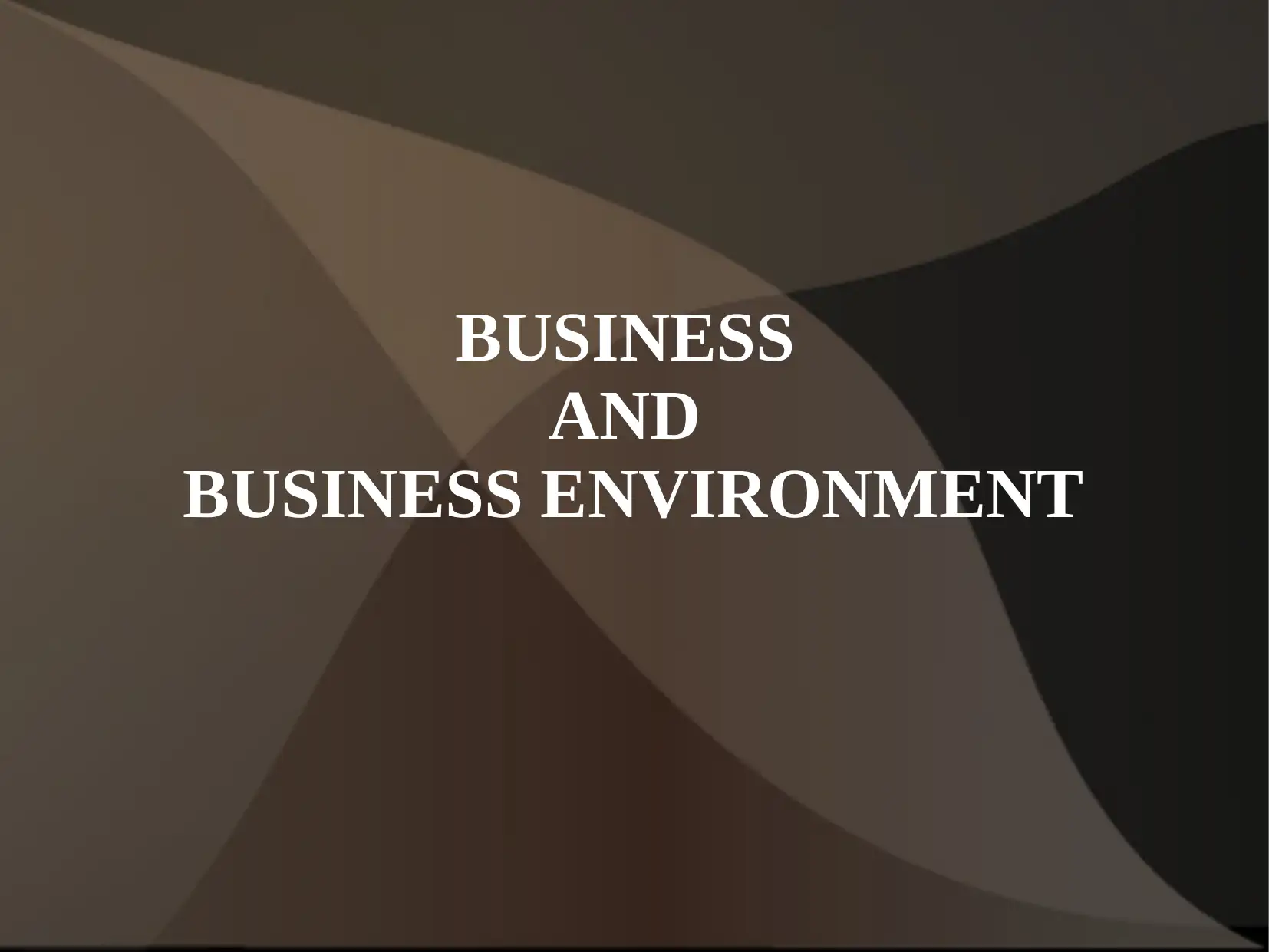
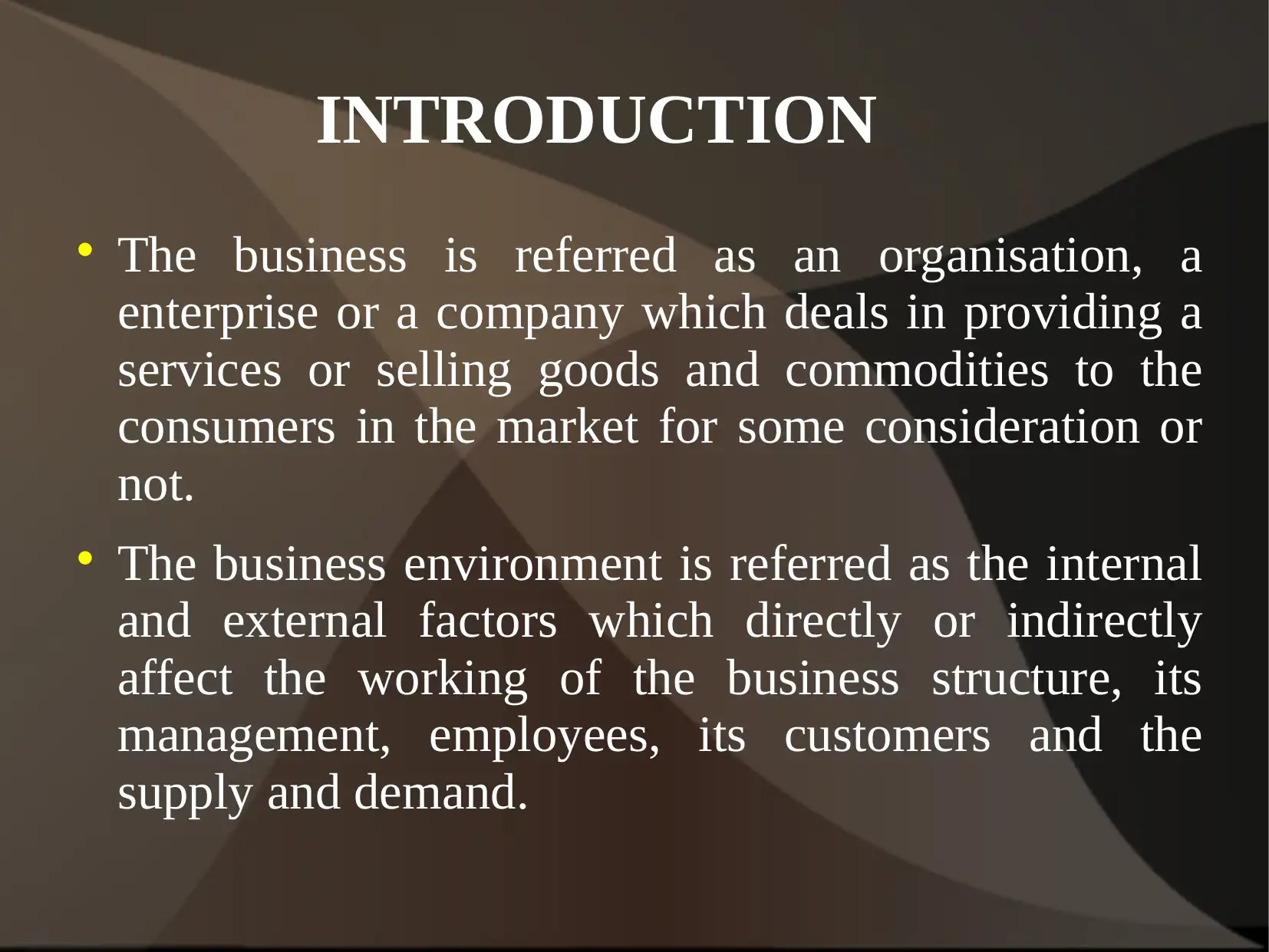
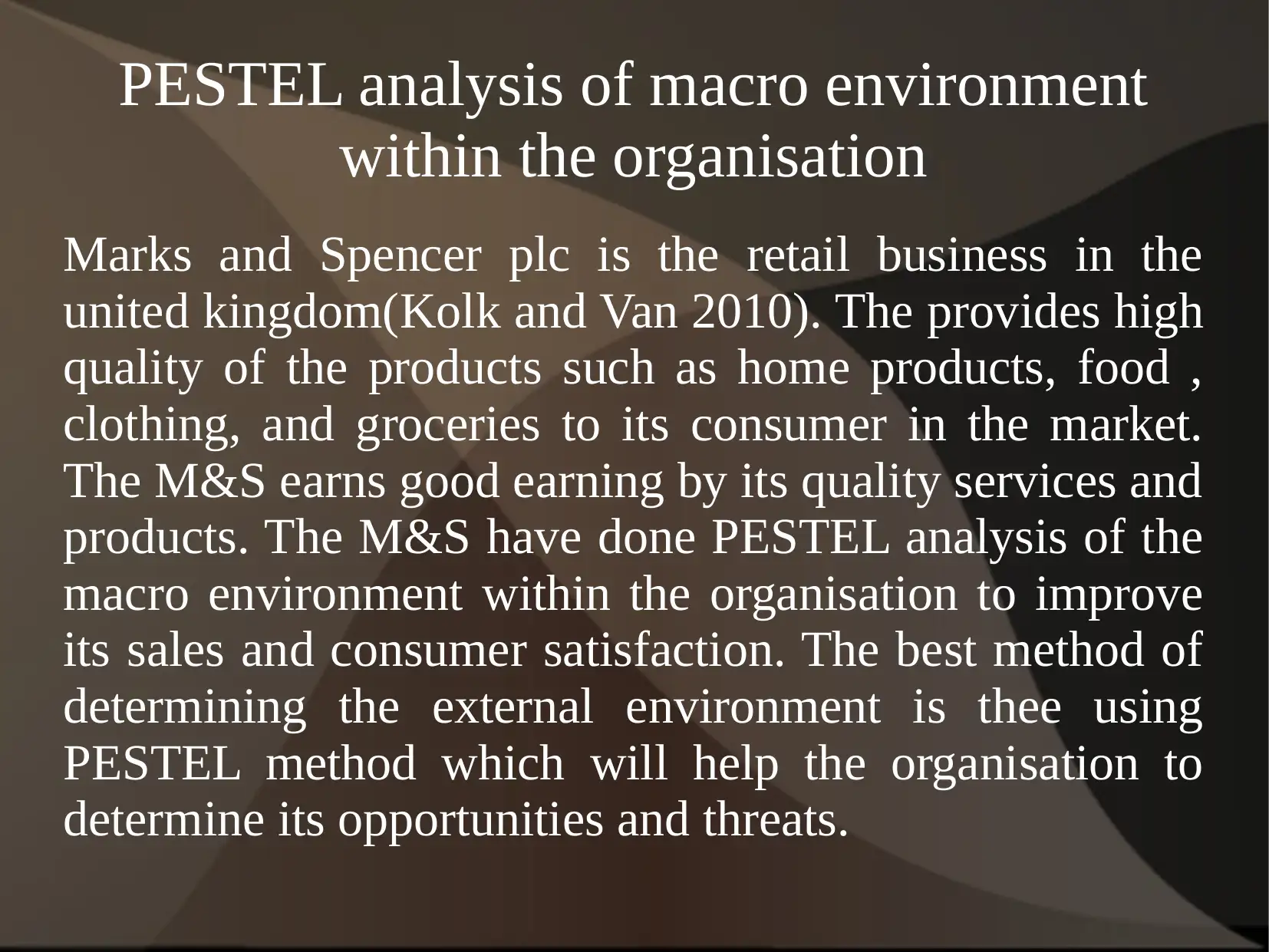

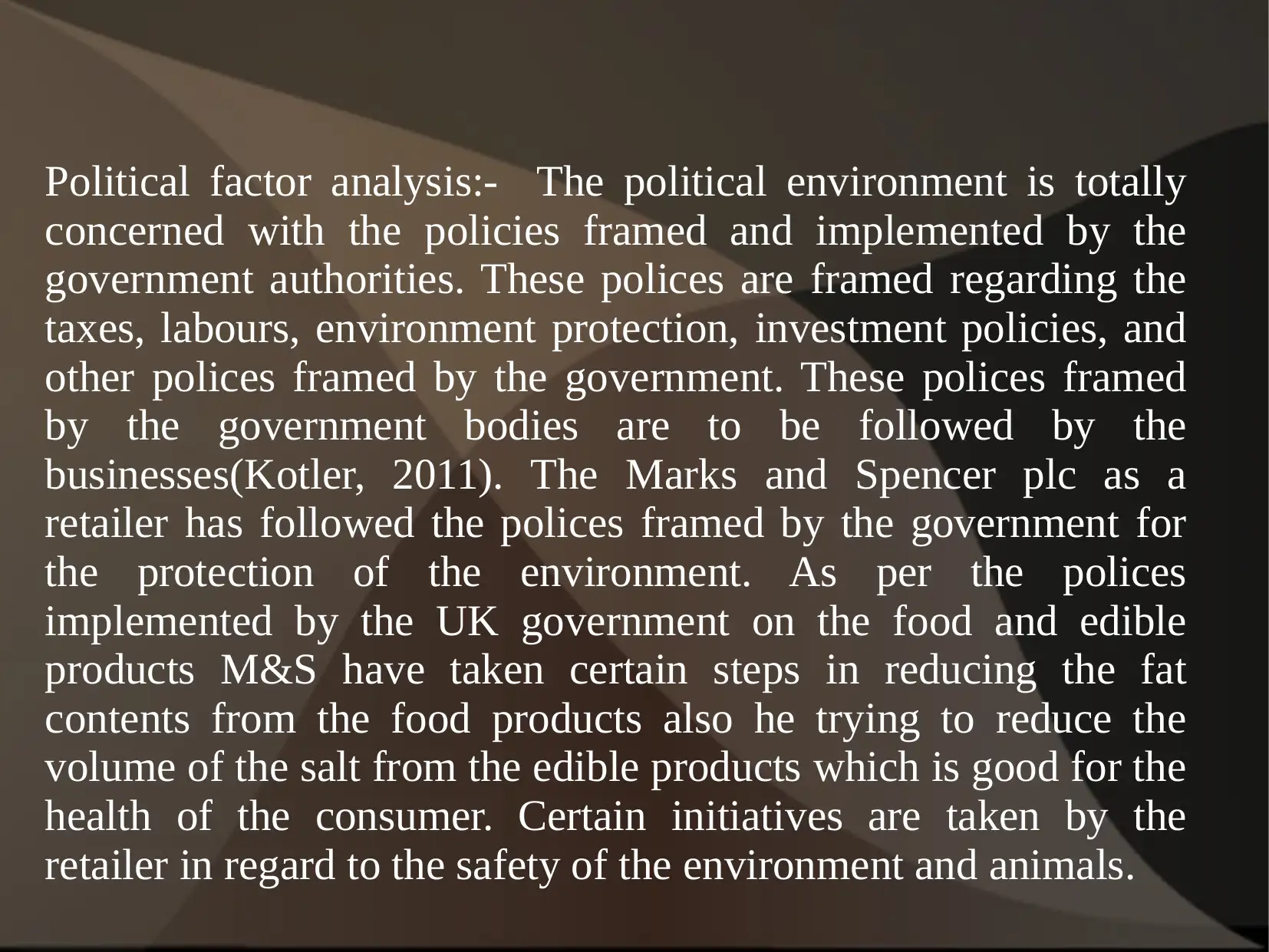
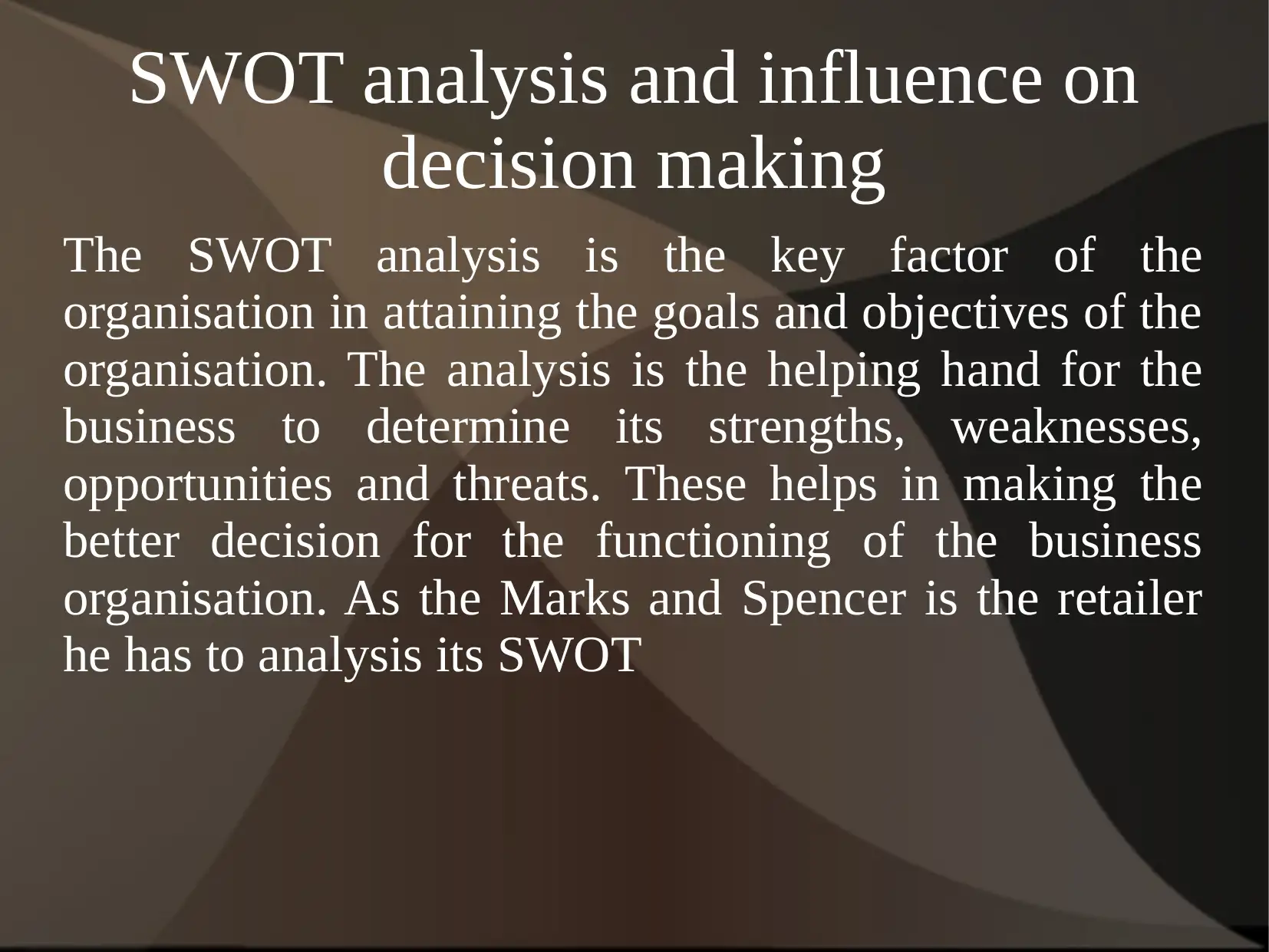
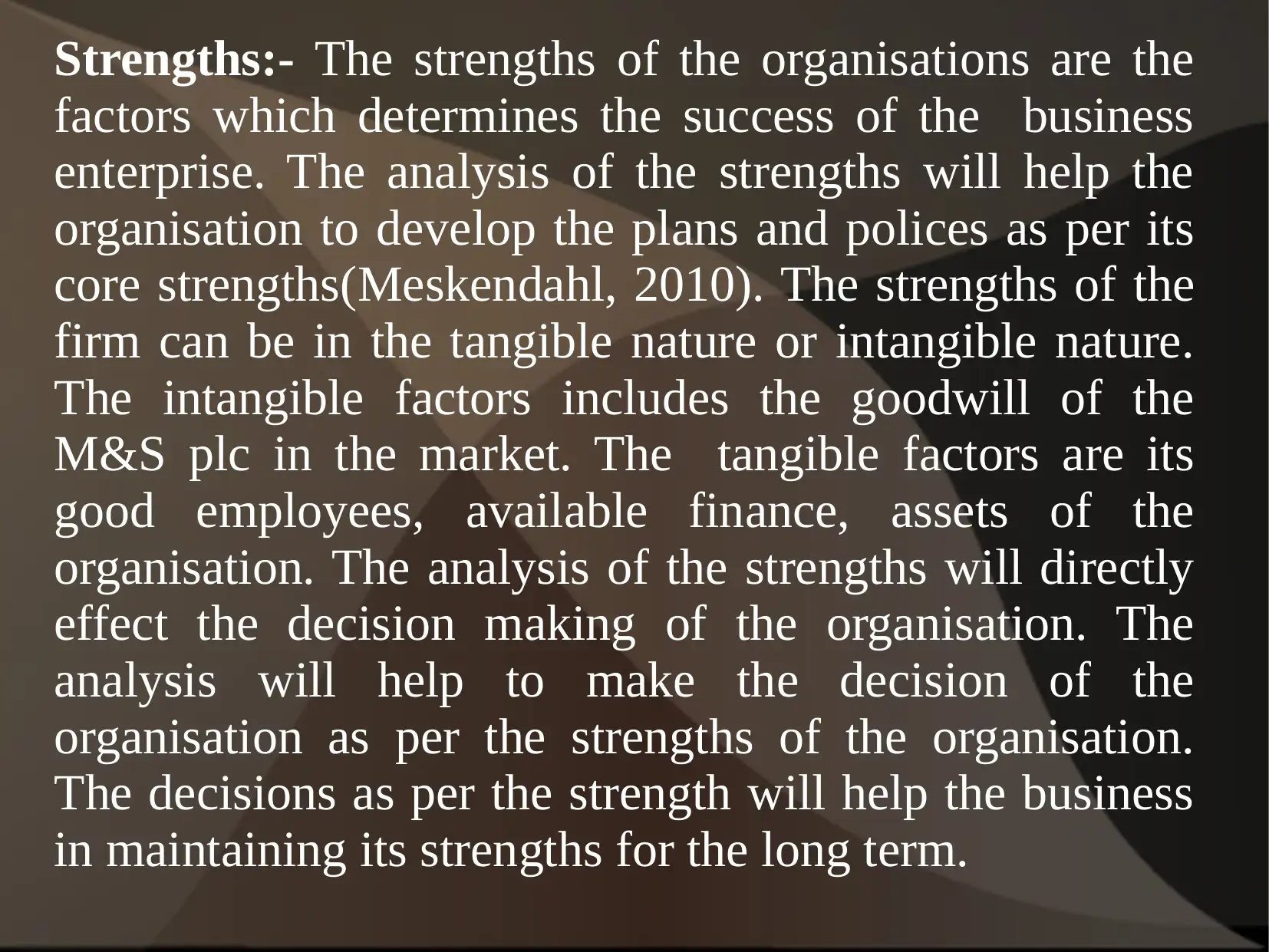
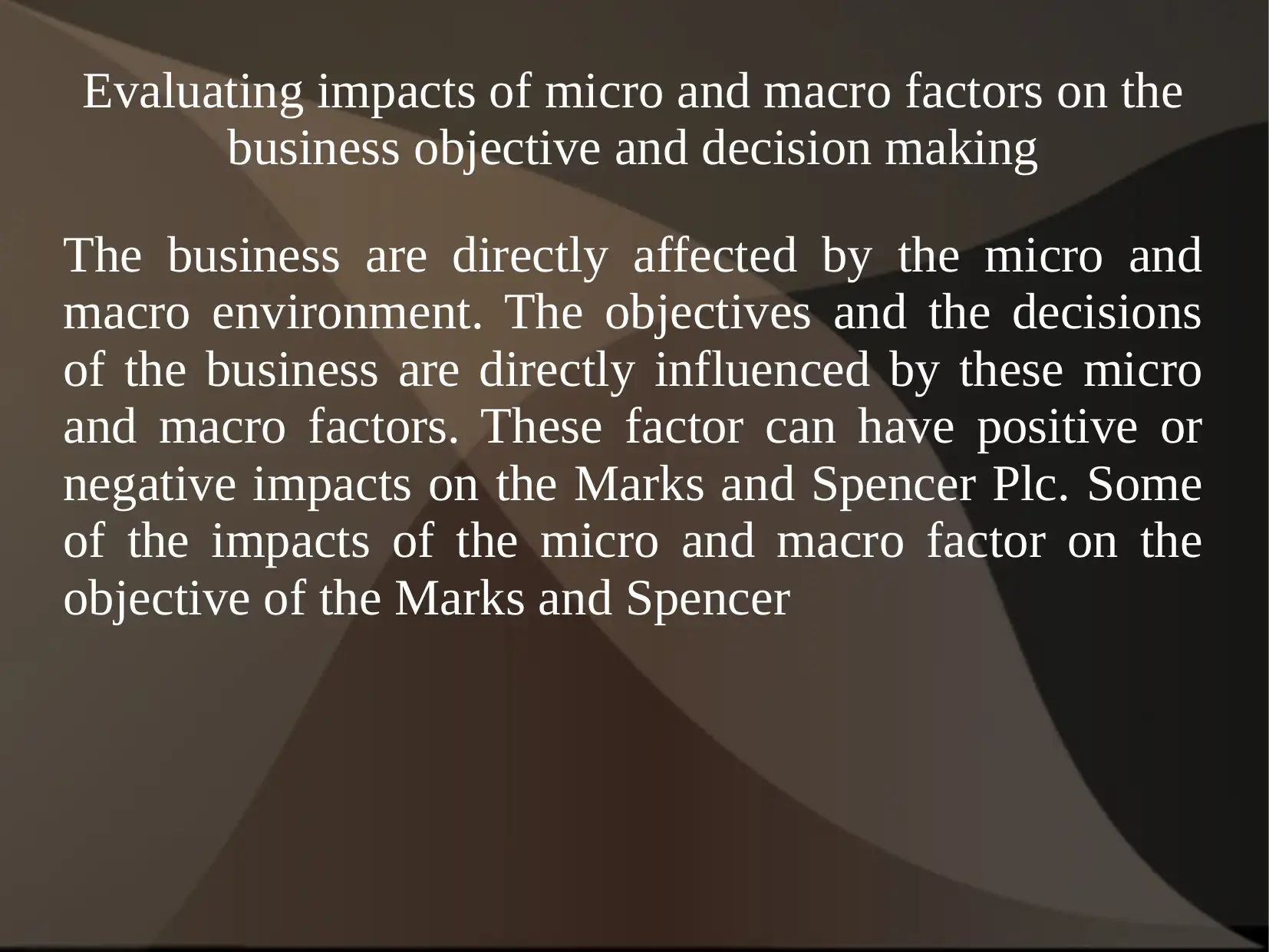
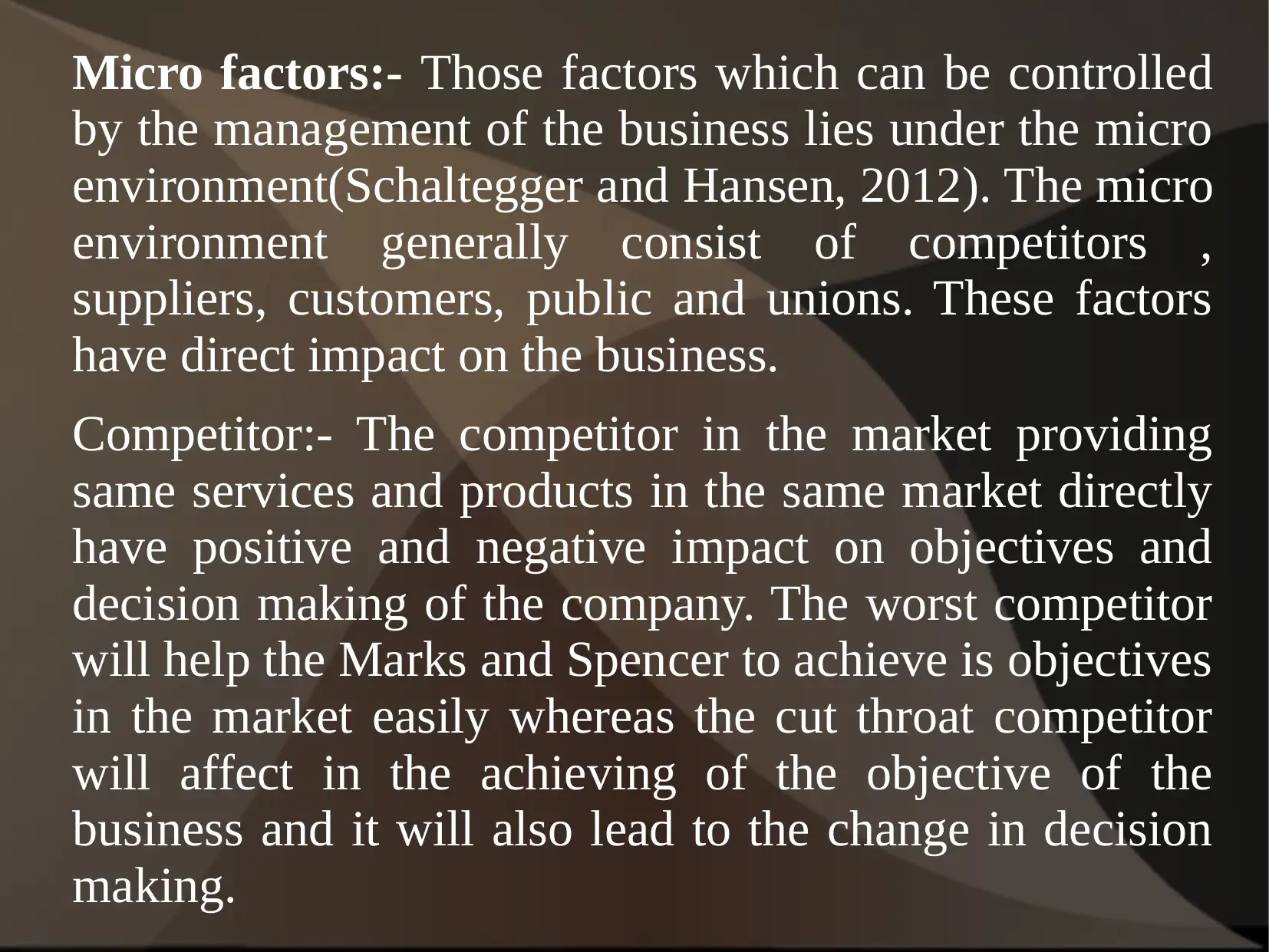
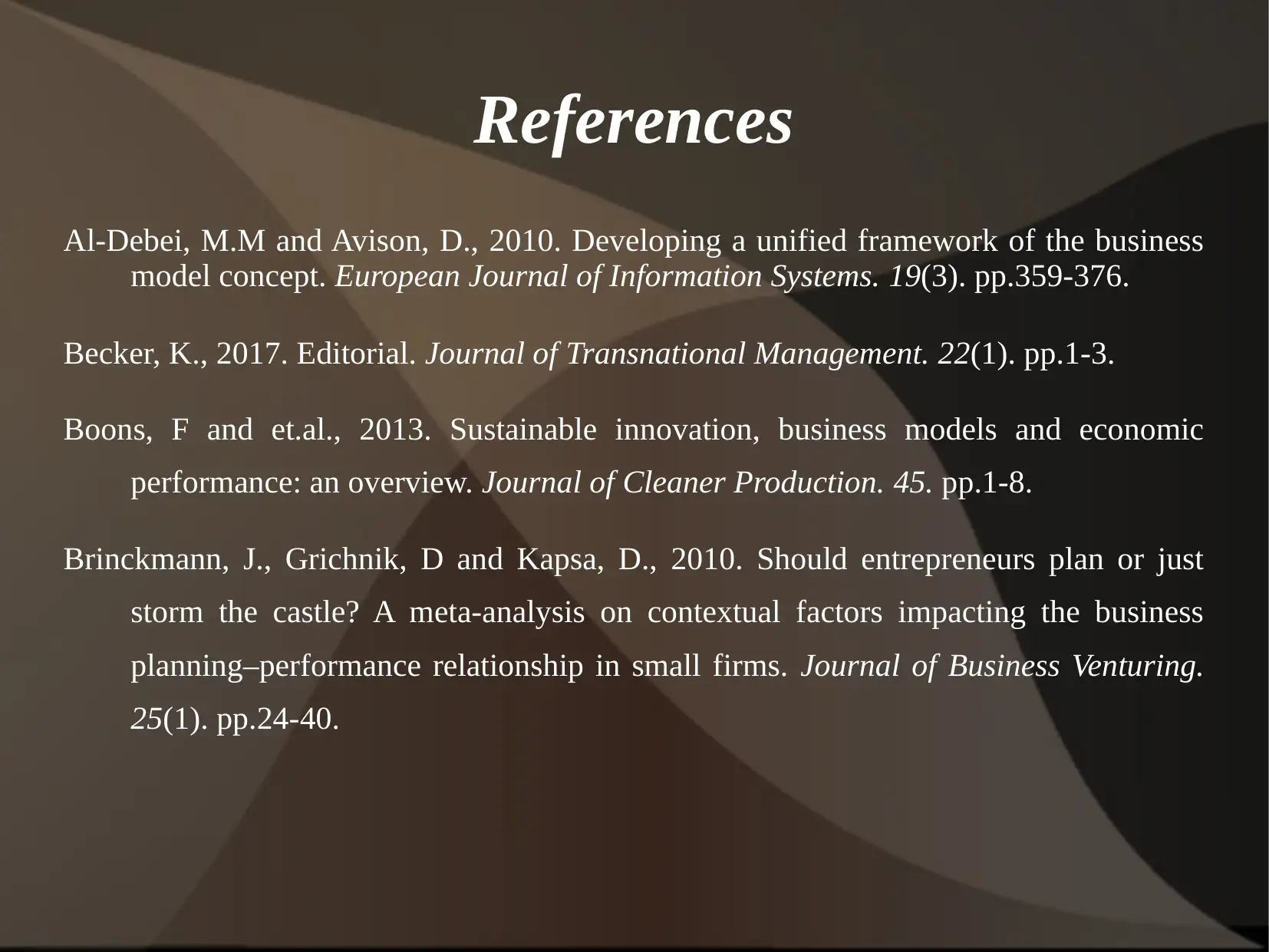







![[object Object]](/_next/static/media/star-bottom.7253800d.svg)